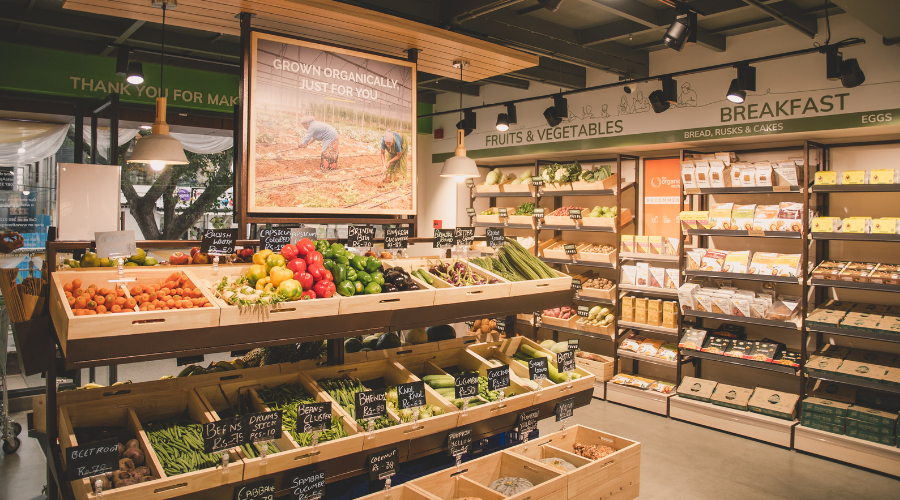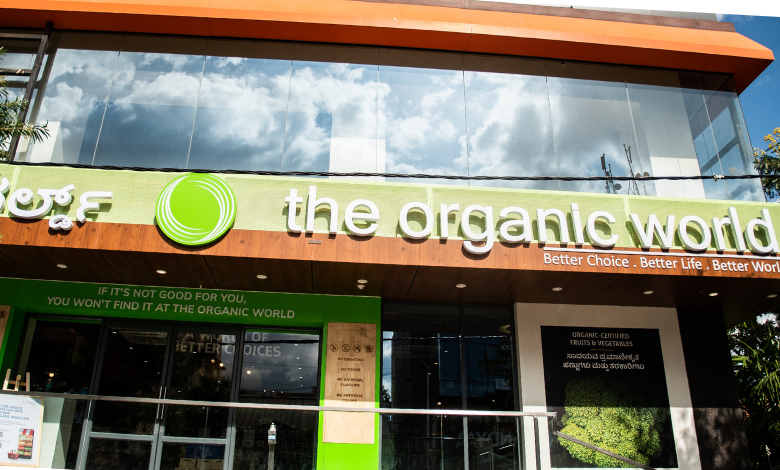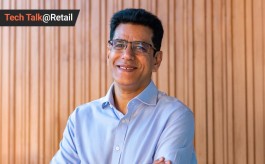‘Retailers can take a stand that products that are not good for sustained consumption will not be sold.'
By N Jayalakshmi | December 15, 2021
Organic products are increasingly finding a market with an increasing number of health conscious Indians becoming more aware and demanding in terms of knowing how their food is produced. Bridging the gap between producers/sellers of organic products, and consumers seeking them, are the retailers. The Organic Worldis a leading Bengaluru based organic and natural products retail chain with 13 retail outlets in the city and fast seeking to expand in the South. Gaurav Manchanda, Managing Director of The Organic World, shares with Retail4Growth, his observations on some market trends, the challenges and the retail brand’s journey thus far.

“Quality of food consumption is by and large compromised in India, the country ranks 2nd, next only to China, in terms of per capita deaths due to diet and this is supported by research data,” says Gaurav Manchanda, Founder Director, The Organic World of the NIMIDA GROUP, talking about the need for organic products and a strong retail platform to sell them.
The Organic World (TOW) is a leading Bengaluru based organic and natural products retail chain with 13 retail outlets in the city and over 2500+ chemical- and preservative-free products. The Organic World stores stocks 2000 plus SKUs from a range of brands and positions itself as a responsible neighbourhood grocery store . “We have taken a strong stand as a responsible retailer and want to show that retailers and distributors can take a stand that products that are not good for sustained consumption will not be sold.”
 He adds, explaining the critical need today for chemical free products, “Today diseases like diabetes, heart diseases and cancer are all going up and people are not able to pin point the exact causes. But food is an important part of a healthy lifestyle and we are showing people what they need to do for sustained consumption in a non-compromised fashion.”
He adds, explaining the critical need today for chemical free products, “Today diseases like diabetes, heart diseases and cancer are all going up and people are not able to pin point the exact causes. But food is an important part of a healthy lifestyle and we are showing people what they need to do for sustained consumption in a non-compromised fashion.”
Guidelines for responsible retailing and selling
This means the store has a set of guidelines and a list of banned chemicals/ingredients that are shared with potential brands before they are stocked in the store. The list of banned chemicals includes sodium benzoate which is found in carbonated drinks, pickles, salad dressing, fruit juices and condiments; high fructose corn syrup found in soda, juice, candy, breakfast cereals and packaged snacks; artificial flavourings/colours found in most snacks and packaged foods, etc.
“We ask for lab test reports of their foods, also do third-party lab tests to make sure they conform to the guidelines,” informs Gaurav talking about how the retailer ensures that the brands who come to them follow their guidelines.
 Retail as a bridge for organic products
Retail as a bridge for organic products
Further, talking about the challenges that organic farmers and manufacturers face and how retailers can help bridge gaps, Gaurav says, “Market linkage is always a challenge, especially for organic farmers. So retailers like us provide a ready customer base and help them in terms of creating accessibility to their products, both offline and online platforms and also guide them in terms of what the customers expect in terms of availability. We also set the guidelines for businesses who have not gone into the retail space.”
The company also sources from its own Maple Tree Farms, which it positions as a model farm to help other farms in the neighbourhood, with whom it has tied up, to understand organic farming practices. “We also give them a commitment in terms of picking up their harvest,” Gaurav adds.
Addressing consumer needs
Consumer needs and perceptions when it comes to organic products are also quite distinct, and retail has an important role to play here too. Sharing his observations on this, he says, “When it comes to consumers of organic products, there are broadly three areas of concern: affordability , accessibility and availability. So a market linkage needs to be created to address these.”
Also, in terms of merchandising and story layout, Gaurav adds that TOW follows an international format, designed by the in house team, which follows the philosophy of ‘Nudge for good’. Explaining it he says, “We encourage and nudge people towards healthy food habits and therefore towards consuming more fruits and vegetables. So these are placed upfront in the store.”
When it comes to expanding the consumer base, awareness regarding the need for organic products and the reasons for differential pricing could also be a challenge for many organic farmers and manufacturers. But according to Gaurav, the pandemic has been a big trigger for people to realise the need to consume better food and are taking baby steps towards it.
“More people are now actively and proactively consuming better and they typically take a gateway approach. They first start with their children when it comes to buying organic and healthier foods, and then extend it to the family in terms of buying organic fruits, vegetables, rice etc. And then they extend to other products like breads, eggs etc. For example, we have seen the same family buying both organic and inorganic milk. So there is an evolution process in many families when it comes to buying and consuming organic products,” explains Gaurav.
For TOW, having established a strong footprint in Bangalore , where
according to Gaurav, there is greater acceptability of organic products, the plan now is to tap other cities in the South. Summing it up Gaurav says, “Market research says that the organic and healthy foods business has been growing at a healthy 25% every year and it will continue to grow. So with our stores and omnichannel presence, we are very well placed to see further growth.”









Comments